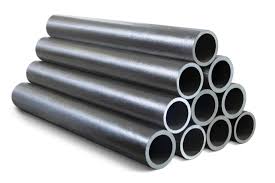1. Raw materials for seamless pipes
The raw materials of seamless pipes can be divided into carbon steel, alloy steel and stainless steel.(1) Carbon steel seamless pipe
①Low carbon steel (carbon content less than 0.25%): Low carbon steel seamless pipes have good toughness and plasticity and are easy to process. However, low carbon steel has relatively low strength and hardness, making it unsuitable for mechanical parts.②Medium carbon steel (carbon content between 0.25% and 0.6%): Medium carbon steel pipe has high hardness and strength and is suitable for making mechanical parts with high strength requirements.
③High carbon steel (carbon content greater than 0.6%): High carbon steel has very high hardness and strength, but its toughness and plasticity are poor, and it is easy to break.

(2)Alloy steel seamless pipe
Alloy seamless steel pipe is a kind of seamless steel pipe. Its properties are much higher than ordinary seamless steel pipes. Because this kind of seamless steel pipe contains more Cr, its heat resistance, cold resistance and corrosion resistance are unparalleled. Seamed steel pipes are not as good as steel pipes, so alloy steel pipes are widely used in fields such as crude oil, chemical plants, power engineering, and heating furnaces.Alloy seamless steel pipes include elements such as silicon, manganese, chromium, nickel, molybdenum, tungsten, vanadium, titanium, niobium, zirconium, cobalt, aluminum, copper, boron, rare earths, etc.









